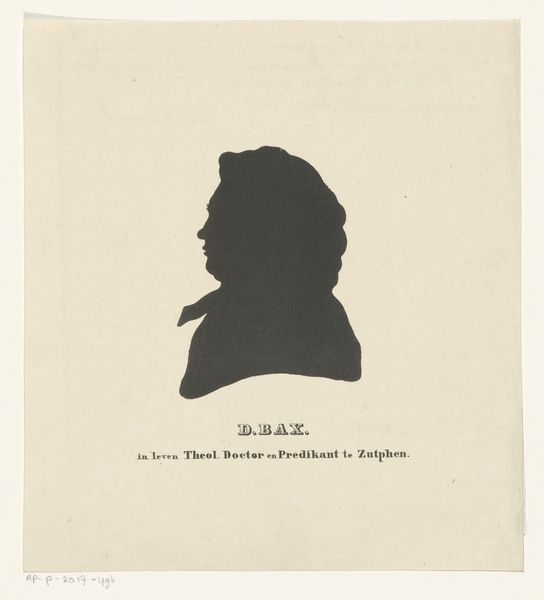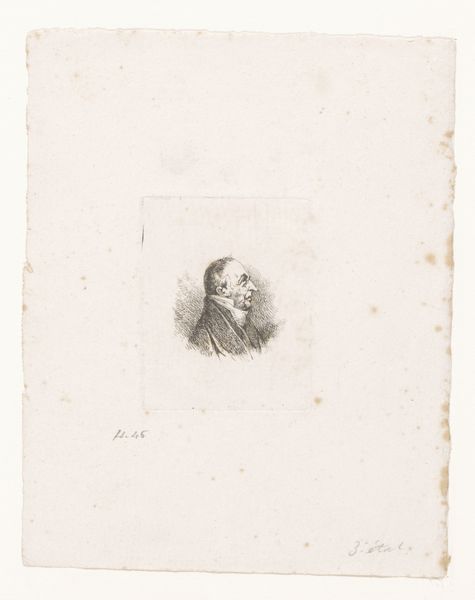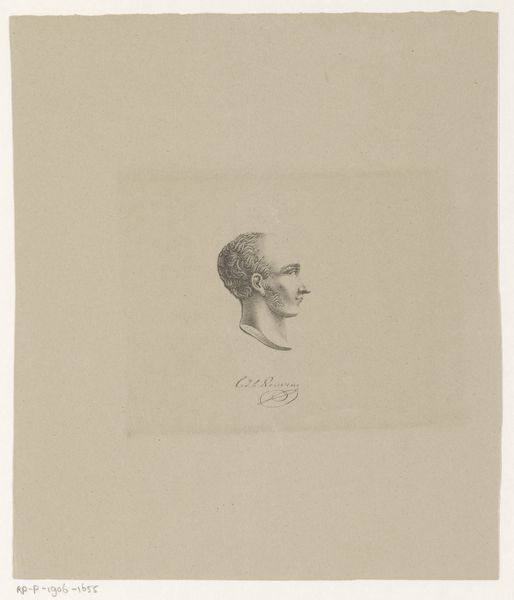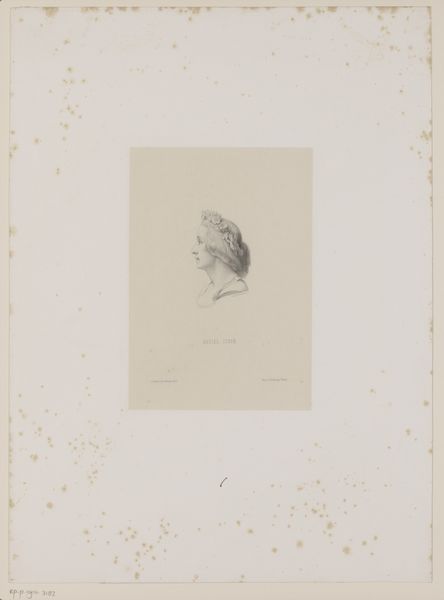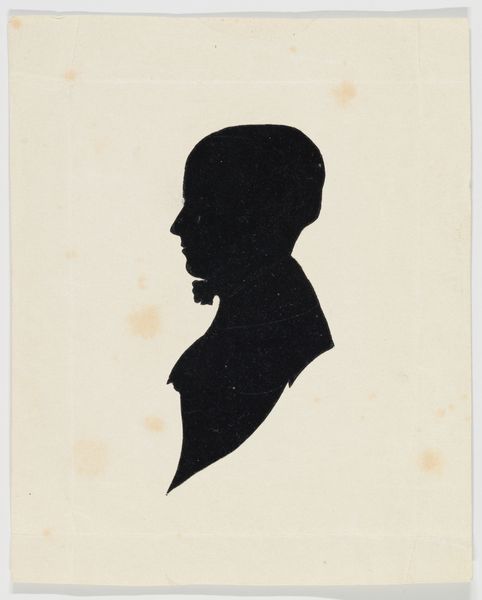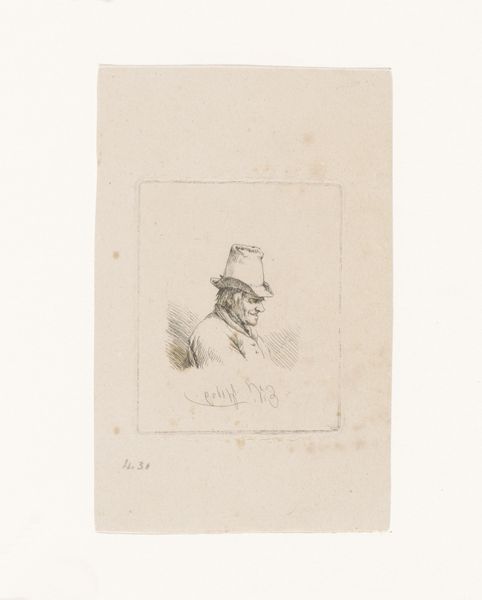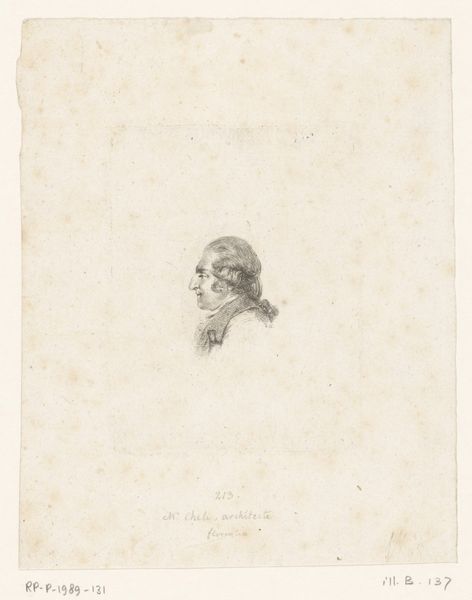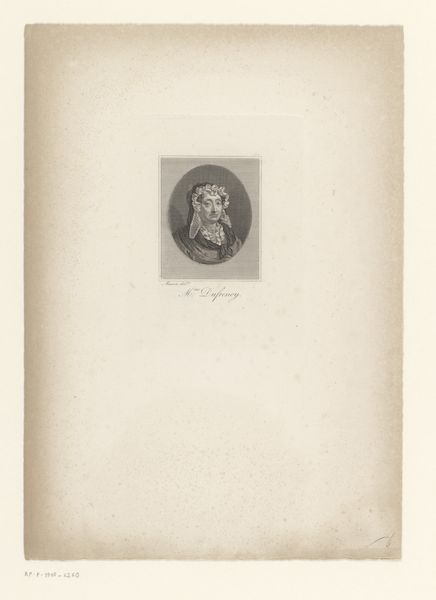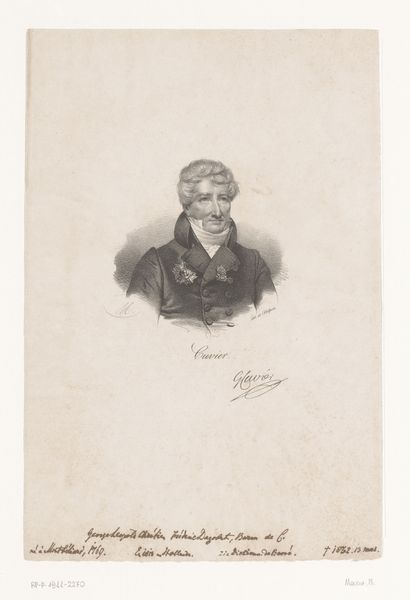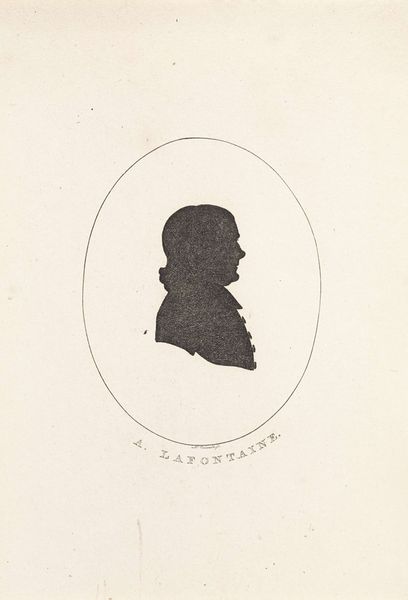
drawing, paper, pencil
#
portrait
#
drawing
#
figuration
#
paper
#
form
#
romanticism
#
pencil
#
line
#
academic-art
Dimensions: height 238 mm, width 176 mm
Copyright: Rijks Museum: Open Domain
Curator: Welcome. Here we have an interesting drawing from the collection, titled "Silhouetportret van onbekende man," or "Silhouette Portrait of an Unknown Man," made sometime between 1822 and 1863. It’s currently held at the Rijksmuseum. Editor: My first impression is one of elegant simplicity. Just a striking black shape against the creamy white of the paper. There’s something almost severe about its economy of line. Curator: Silhouette portraits were a very popular and relatively inexpensive form of portraiture in the 19th century. Think of it as the pre-photography equivalent of a quick snapshot. It democratized image-making. Editor: Exactly! This piece, using pencil on paper, highlights a tension between fine art and accessibility. Was it produced en masse in a studio, or rendered with particular care as a commission? The materiality implies wider consumption. Curator: While the identity of both the sitter and artist are unknown, the very act of commissioning such a portrait speaks to the growing importance of individual identity and representation within society. The rising middle class, eager to emulate the aristocracy. Editor: And I wonder about the process. Did the artist meticulously trace the shadow, refining the lines? How much labor went into what appears so effortlessly concise? And who purchased it, and why keep it despite its apparent generic depiction? Curator: The unknown artist’s reliance on form to convey character is evident; observe the curve of the nose and the cut of the coat, all indicating perhaps a man of some status, firmly positioned within the structures of his time. The very posture can show wealth or aspiration. Editor: It makes you consider all the hands involved, too—the pencil makers, the paper manufacturers, even those involved in the transportation and display of the final piece. What seems like a simple likeness has surprisingly intricate connections to 19th-century labor and industry. Curator: A final reflection might consider the broader history of portraiture and representation. It offers a glimpse into a period when capturing one's likeness was becoming more accessible. Editor: I see this not only as an artifact representing social shifts, but as evidence of labor materialized, prompting a new focus on the industrial aspects underlying even the most seemingly delicate art forms.
Comments
No comments
Be the first to comment and join the conversation on the ultimate creative platform.
